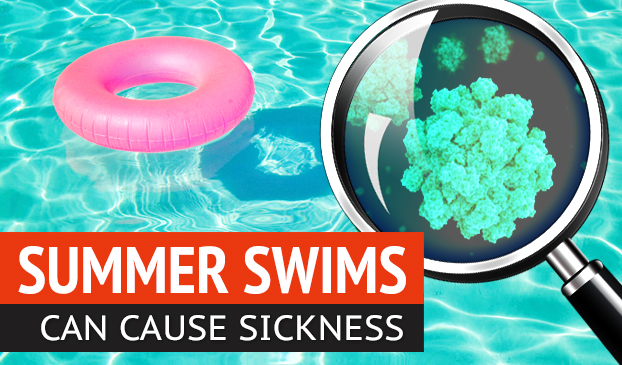Swimming is a timeless activity, enjoyed by everyone wishing to cool off after frolicing in the hot summer sun. But there may be a potentially dangerous infection present in recreational pools and lakes that patrons and their young children should be made aware of.
Norovirus is a very contagious virus that causes diarrhea and vomiting, and can be spread by others contaminating a water source by releasing bacteria through diarrhea and vomiting.
The Lake Outbreak
According to the Center for Disease Control and Prevention, norovirus affected 70 people who were exposed to the illness while swimming in a lake during the last summer season in July in Portland, Oregon.
Children are more susceptible to becoming contaminated with norovirus, specifically because they are less careful about ingesting water. Those that were affected were mostly aged four to 10.
Officials say that the infection came from the lake because those who swam in it were twice as likely to experience symptoms of the virus in comparison to those who visited the park but chose not to take a dip.
The lake was closed for 10 days to prevent others from getting sick, but since scientists have no way to know exactly when the outbreak is over, the pool was kept vacant for much longer. The virus is invisible — and parents need to be cautious, because symptoms don’t begin to show until a day after exposure.
Staying Safe from the Norovirus
Norovirus is an understudied illness, and scientists will hopefully be learning more about how to prevent it from spreading. Until then, the CDC offers tips on how to prevent the spread of waterborne illness and be a healthy, germ-free swimmer. The CDC suggests the information below:
Keep the pee, poop, sweat, and dirt out of the water!
- Stay out of the water if you have diarrhea.
- Shower before you get in the water.
- Don’t pee or poop in the water.
- Don’t swallow the water.
Every hour—everyone out!
- Take kids on bathroom breaks.
- Check diapers, and change them in a bathroom or diaper-changing area–not poolside–to keep germs away from the pool.
- Reapply sunscreen.
- Drink plenty of fluids.
Check the free chlorine level and pH before getting into the water.
- Pools: Proper free chlorine level (1–3 mg/L or parts per million [ppm]) and pH (7.2–7.8) maximize germ-killing power.
- Hot tubs/spas: Proper disinfectant levels maximize germ-killing power (chlorine [2–4 parts per million or ppm] or bromine [4–6 ppm] and pH [7.2–7.8]).
- Most superstores, hardware stores, and pool-supply stores sell pool test strips.
CitizensReport
Latest posts by CitizensReport (see all)
- 4 Natural Alternatives To Energy Drinks That Will Make You Feel Healthier - February 19, 2018
- NBC Nightly News Publishes Expose On IVC Filters - February 18, 2018
- Good Sugar, Bad Sugar: Why You Should Eat More Fruit - February 16, 2018



Join the discussion